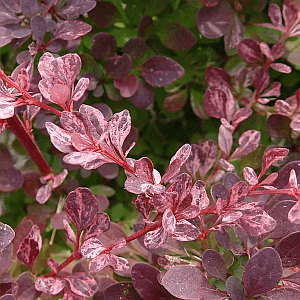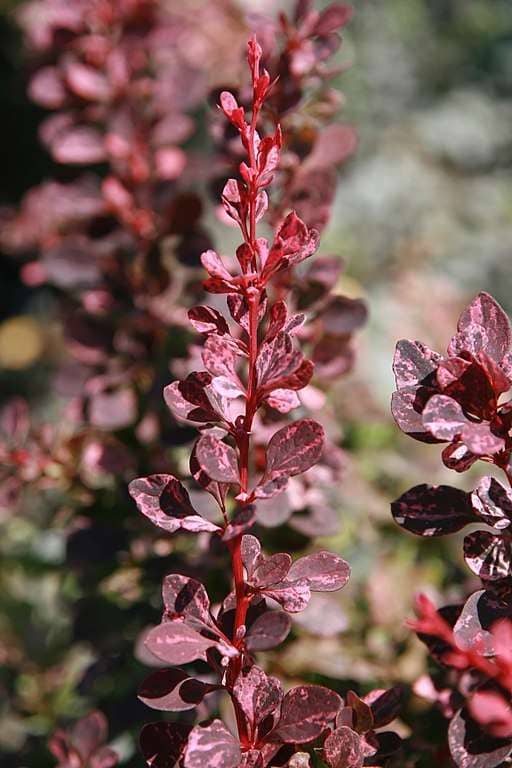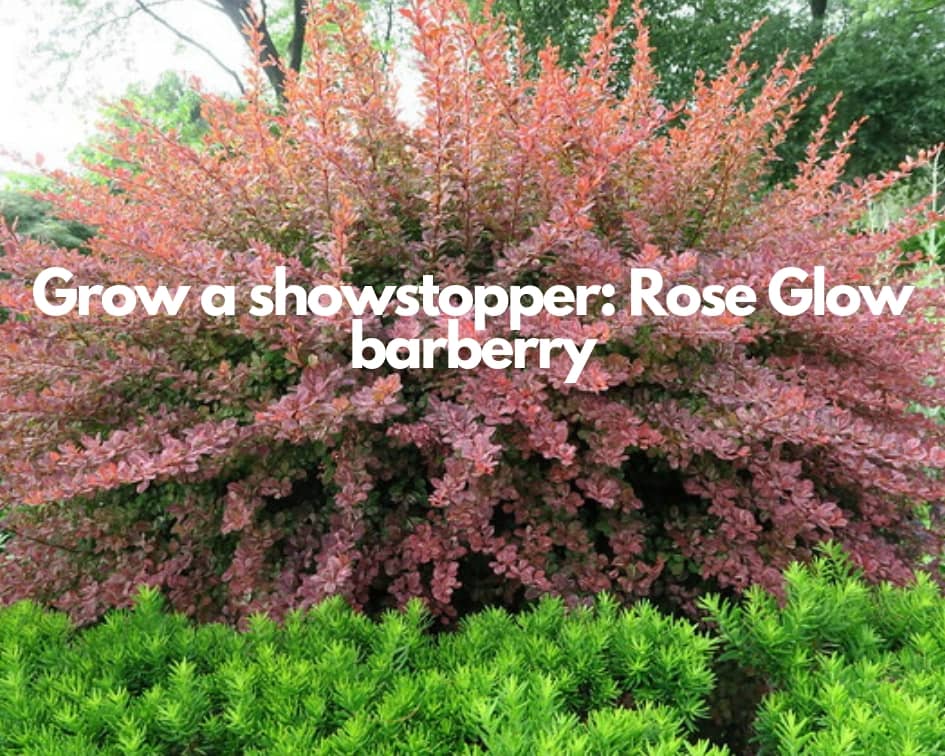This post may contain affiliate links. As an Amazon Associate we earn from qualifying purchases.
Barberry shrubs (Berberis spp.) are the multi-taskers of the garden. They provide pops of color, they play well with others to form a hedge, they are dandy foundation plantings and some, such as ‘Rose Glow’ barberry (Berberis thunbergii forma atropurpurea ‘Rose Glow’), are striking enough to take on the role of a specimen planting.
Barberry, depending on species, can be deciduous or evergreen and grow in a range of USDA hardiness zones. Rose Glow, however, seems to be quite popular, as we’ve received two emails asking for growing instructions, and it thrives in zones 4 through 8. Find your growing zone, here.
Location, location, location
Rose Glow barberry is intolerant of excess moisture at its roots, so ensure that the soil in your chosen planting area drains quickly after a heavy rain.
To determine a site’s suitability, dig a 12-inch-deep hole and fill it with water. If the water drains in less than 30 minutes, the site is suitable. If it takes more than 24 hours to drain, choose another location.

Rose Glow is beloved for its variegated foliage in shades of white, green and pink that burst into a rich red in fall. Maintain foliage color by planting the Rose Glow in full sun.
Growing more than one barberry?
Barberries make striking hedges and, because of the thorny stems, the hedge can also act as a barrier. In fact, many homeowners plant them beneath windows, to act as a deterrent to break-ins.
When planting more than one Rose Glow barberry, plant them five to six feet apart. At five feet apart the hedge will be significantly denser.
Don’t overwater the Rose Glow barberry
If you do, you may kill it. The plant is somewhat drought-tolerant and requires only a weekly watering unless the weather is particularly hot.
Six gallons of water is sufficient to soak the roots in a 10-square foot planting bed, provided you have good soil. Stick your finger into the soil before watering and if it feels wet, hold off on watering for another week.

Fertilizing the barberry
During the active growing season, measure the soil, from the shrub’s main stem to the tips of its widest branches. You’ll use this figure when you fertilize the shrub in spring, just after it begins producing new growth.
As soon as you notice new growth, in spring, apply one-half cup of Scott’s Flowering Tree and Shrub 11-7-7 fertilizer per square yard of the area you measured during the growing season and sprinkle the granules on the soil. Water as you normally do to soak the granules into the soil.

Keep it Shapely
The Rose Glow barberry doesn’t require pruning for its health but only to maintain a desired shape or size. You can safely cut the plant back to 1 foot in height if it becomes too overgrown.
The best time to prune is in mid-to late spring. Wear thick gloves to avoid being impaled by the shrub’s thorns and disinfect pruning equipment before using it. This is easily done by giving it a quick five-minute soak in a solution containing 1 part of household disinfectant (such as Lysol) in 3 parts of water. Or, use these wipes that we’re trying out this season.
The Rose Glow and other types of Japanese barberry are considered invasive in some parts of the country. Control its spread by cutting back the shrub after it flowers so that it doesn’t produce seeds.
Featured image: Kristine Paulus/flickr, via CC BY 2.0



